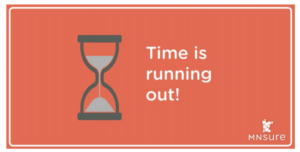According to data released by the National Academy for State Health Policy (NASHP), states that closely manage their Affordable Care Act (ACA) marketplace operations and outreach led the nation in enrolling consumers. State-based marketplaces (SBMs) that used carefully-crafted marketing campaigns achieved stability and increased enrollment by 0.2 percent, while states with federally-managed marketplaces saw enrollment fall by 5.3 percent.
During 2017, there was intense consumer confusion about health insurance due to Congressional debate over repeal-and-replace of ACA, the elimination of federal marketing dollars, and shorter enrollment periods in many states. SBMs had to design their consumer outreach to cut through the confusion and provide clear and accurate information to their constituents.
The 12 SBMs and five SBMs that control their operations but use the federally-facilitated marketplace and website (SBM-FP) are in charge of the entire enrollment process. They shepherd consumers through the application and health plan shopping process, and explain how consumers can fully utilize their coverage. As the “coverage facilitator,” state marketplaces play an essential role in educating consumers about their health insurance choices to ensure they choose the best plan to meet their needs. SBMs coordinate with other state entities, including Medicaid and leaders in their communities, use data to accurately target uninsured and disadvantaged populations, and effectively communicate relevant information about health insurance.
Bottom line: SBMs had strong enrollment because of their understanding and involvement in their communities and their effective marketing.

SBMS Prepared Consumers for Shorter Enrollment Periods
This year, the federal government halved the previous open enrollment period for the marketplaces from 92 days (Nov. 1-Jan. 31) to 45 days (Nov. 1-Dec. 15). Ten SBMs used their flexibility and extended their enrollment periods, including three SBMs that maintained the same enrollment period as last year. This meant that many states had different enrollment timetables from years past, and in some cases, there was a significant difference in the SBM enrollment timelines from the 34 states that used the federally facilitated model (FFM). SBM state officials aptly anticipated that the varying deadlines would cause confusion, and that customers who were not aware of reduced timeframes would miss enrolling. Following months of federal repeal-and-replace debate and chipping away at coverage, many states focused on early marketing and consumer education to broadcast exactly when their open enrollment periods would occur.
To get a jump-start on marketing in a shortened open enrollment period, Rhode Island’s marketplace Healthsource RI began their promotion campaign in September, a full month earlier than the prior year. Its “We Work for You” campaign stressed that the marketplace was still open and that they were available to help consumers find a low-cost, high-value plans that worked for them. Phase 1 of its outreach plan focused on building awareness of the marketplace and the enrollment timetable. Phase 2 concentrated on educating consumers about the website’s “decision support tools” available to consumers who were actively shopping for insurance.
 Nevada Health Link is an SBM that used the federal platform and as a result was bound to the federal 45-day sign-up period. The state focused on raising awareness of new enrollment deadlines by saturating the media with strong television and radio ads to remind consumers of the importance of buying health insurance and of the fast-approaching deadlines. Nevada Health Link focused on the message: “You can’t afford not to be insured” throughout its shortened enrollment window.
Nevada Health Link is an SBM that used the federal platform and as a result was bound to the federal 45-day sign-up period. The state focused on raising awareness of new enrollment deadlines by saturating the media with strong television and radio ads to remind consumers of the importance of buying health insurance and of the fast-approaching deadlines. Nevada Health Link focused on the message: “You can’t afford not to be insured” throughout its shortened enrollment window.
SBMs Used Data to Market Smart
The individual market serves 15 percent of the total US population, including those without insurance, compared to 49 percent of Americans who have coverage through their employers. This makes prospective marketplace consumers one of the smaller groups to target in an insurance marketing campaign. Designing a cost-effective marketing strategy for this population was important. Nowhere was that more apparent than in Kentucky. For the first time this year, Kentucky and other SBMs that used the federal platform had access to detailed data about their targeted enrollment population from the Centers for Medicare & Medicaid Services (CMS).
The Kentucky Health Benefit Exchange compared enrollment data from 2016 to 2017 to develop marketing aimed at consumers who had dropped out of marketplace coverage. Kentucky also used this data to conduct a highly targeted, direct response texting campaign. It texted consumers reminders about enrollment deadlines and information about in-person assistance available in geographic regions across the state.
Marketplaces also used data to identify areas of consumer confusion and, in response, developed improved educational resources and messages to dispel misinformation and attract consumers. Over the last two years, Covered California held 46 focus groups in five languages and surveyed more than 4,000 people in order to identify effective outreach strategies. Covered California learned that while awareness of the marketplace was high (96 percent of those surveyed were aware of the marketplace), continued education about the availability of financial assistance was needed. It discovered that 73 percent of uninsured, subsidy-eligible people didn’t know they would qualify for tax credits that would lower their insurance costs. The marketplace used this information to shape its 2018 campaign and intensified messaging about the availability of financial assistance.
SBMs Used Community Partnerships to Reach More Consumers
Over the last five years, SBMs have built relationships with community leaders, organizations, and local agents and brokers. Through these partnerships, SBMs reached consumers through “trusted influencers” in their own communities and expanded the number of experts providing enrollment assistance.
This year, Access Health CT (AHCT) once again collaborated with local elected officials and community leaders and influencers to host outreach events during open enrollment. In total, AHCT conducted over 60 events in the seven-week period. In a state like Connecticut, which had an uninsured rate of 3.5 percent in 2016, community-based enrollment assistance is important in order to reach a very small and increasingly difficult–to-reach uninsured population. The marketplace also worked to improve the use of in-person “storefronts,” using “heat maps” of uninsured populations and current membership to strategically identify locations for these facilities. AHCT opened 10 storefronts to provide in-person assistance near those communities.
Your Health Idaho trained more than 900 agents and brokers, expanded broker-support hours, and deployed a new data access portal that allowed consumer connectors to view eligibility history and results for tax credits. Idaho is a rural state, so the exchange focused on sending the message that no matter where consumers lived, local enrollment assistance was available. More than 70 percent of Idaho’s enrollments were made through an agent or broker, reflecting the state’s strong engagement with the broker community.
 MNsure, Minnesota’s state marketplace, used its network of 1,900 assistors as an echo chamber for their statewide advertising efforts. Anticipating public confusion over the state’s enrollment deadline, the assistor network shared messaging that warned consumers about important dates and the availability of in-person assistance.
MNsure, Minnesota’s state marketplace, used its network of 1,900 assistors as an echo chamber for their statewide advertising efforts. Anticipating public confusion over the state’s enrollment deadline, the assistor network shared messaging that warned consumers about important dates and the availability of in-person assistance.
Anticipating Future Challenges, SBMs Continue to Improve Marketing and Outreach
While the 2018 enrollment period has closed, SBMs continue to be active coverage facilitators for their insurance products. They perform a critical role in educating consumers about their coverage and, where appropriate, continue to provide opportunities for consumers to enroll via special enrollment periods.
Through targeted messaging, community engagement, and direct outreach, SBMs continue to work with people in the individual market to ensure that they make the right choices when buying insurance. The confusion and instability that marketplaces faced this year may continue, as the repeal of the individual mandate and new, restrictive federal rule-making lead many to expect that premiums may increase and insurers may withdraw from the individual market. SBMs will be able to learn from their recent successes and refine and improve their marketing and outreach strategies in the future.



